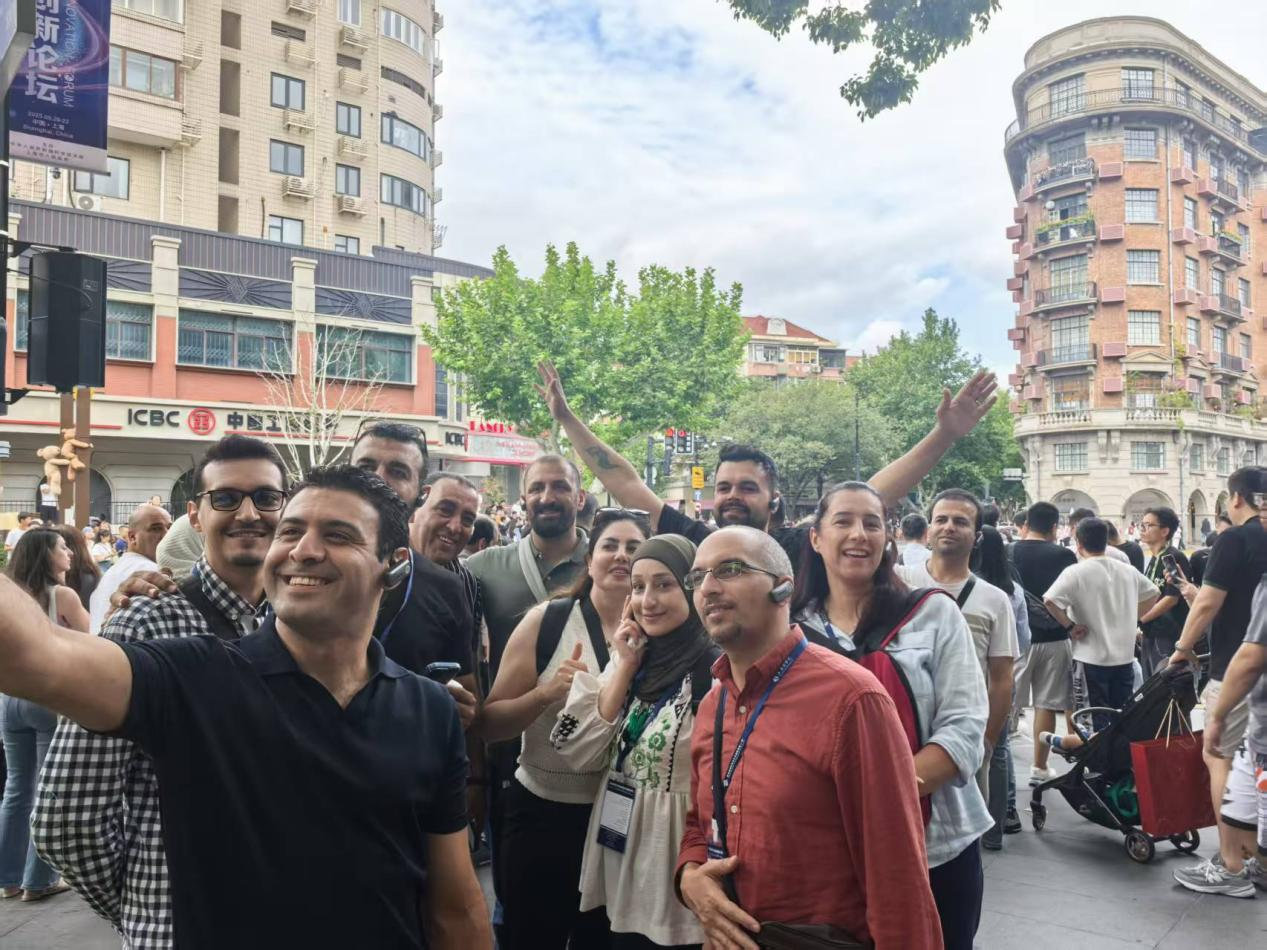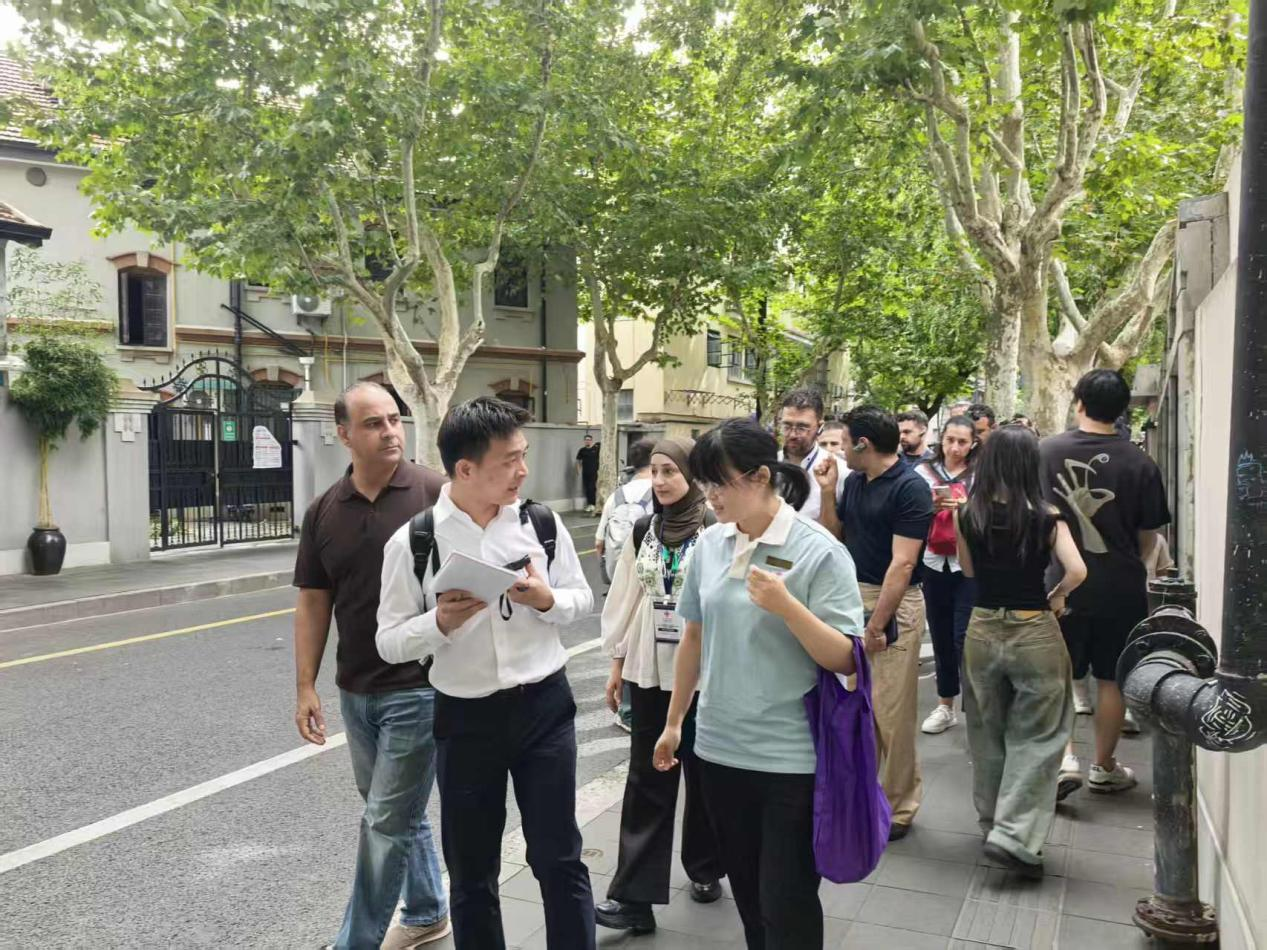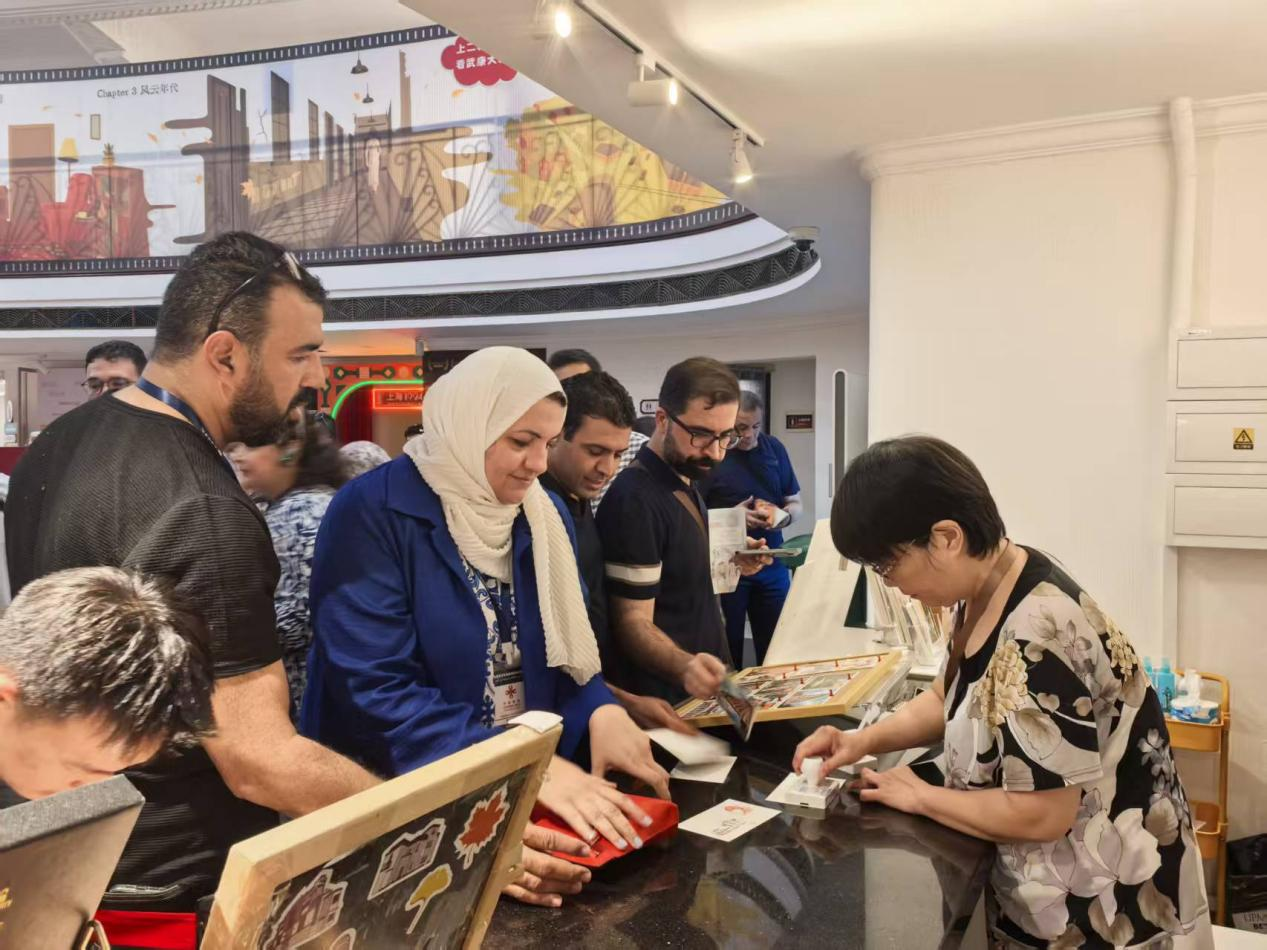On the afternoon of September 21st, the Arab Nations Culture and Tourism Integration Development Training Program, organized by the Ministry of Commerce and undertaken by SBS’s Ministry of Commerce International Business Officials Training Base (Shanghai), conducted a field study trip to the Shanghai Hengfu Historical and Cultural Preservation Area. Twenty-nine trainees from six countries including Bahrain, Egypt, Iraq, Morocco, Jordan, and Palestine visited the area accompanied by professional guides from the Xuhui District Culture and Tourism Service and Development Center, gaining an in-depth understanding of this urban model that integrates historical preservation with contemporary vitality.
Adopting a “field investigation” approach, this activity aimed to build a communication platform for cultural and tourism practitioners from Arab countries, helping them learn from China's practical experience in the revitalization and utilization of cultural heritage and the innovation of cultural and tourism formats. The Hengfu Historical and Cultural Preservation Area, one of Shanghai's most concentrated and well-preserved areas of modern historical architecture, hosts nearly a thousand historical buildings encompassing styles such as French Renaissance, Spanish, and Neoclassical. It serves as a “living fossil” of Shanghai’s urban cultural context and a core demonstration zone for Shanghai's “protection first, revitalization and utilization” model of cultural and tourism integration, making it a key site for this training program’s investigation.
The trainees first visited the Wukang Building, renowned as “Shanghai’s First Corner”. The guide systematically introduced the historical evolution, architectural features, and restoration philosophy of this French-style building designed by László Hudec. The explanation focused on its transformation path from a residential space to a composite urban landmark, achieved by introducing new functions like culture and commerce while strictly adhering to its historical original appearance.

Subsequently, the trainees conducted a field investigation along Wukang Road, immersing themselves in the overall ambiance of this historic street. Taking typical buildings along the way, such as Spanish-style villas and Neoclassical residences, as examples, the tour guide explained the specific ways employed in the preservation area, guided by policies, to transform old buildings into new spaces like cultural and creative bookstores and specialty cafes, demonstrating the practical achievements of organically connecting historical fabric with modern functions.

At the final stop of the tour—the Shanghai Old House Art Center, the trainees systematically learned about the stylistic characteristics, preservation and restoration techniques of Shanghai’s modern architecture through abundant physical exhibits, historical photographs, and architectural models. The cultural and creative products developed by integrating elements of old architecture within the center also vividly demonstrated innovative approaches to the revitalization and utilization of cultural heritage.

The trainees generally gave high praise to this activity. Mr. Amir from the Egyptian Ministry of Tourism and Antiquities affirmed the Shanghai model that “emphasizes both protection and livability”. Professor Manhal Boya from Salahaddin University expressed admiration for the historical atmosphere shaped along Wukang Road. Ms. Juliana from the Palestinian Ministry of Tourism and Antiquities particularly pointed out that “The buildings blending Andalusian and French styles on both sides of the street not only enrich the visual experience but also reflect Shanghai’s respect for cultural diversity”. She emphasized that performers, writers, and artists engaging in street performances and creation, “transforming public spaces into open art stages”, is a model that turns cultural resources into something perceivable, interactive, and experiential, allowing citizens and tourists to subtly feel the enduring charm of culture.
This investigation was not only a vivid field teaching session but also a profound dialogue between civilizations. The trainees generally believed that, although national conditions differ, the protection and revitalization of cultural heritage and the exploration of cultural and tourism integration are common pursuits. China’s practices provide valuable references for Arab countries and inject new meaning into China-Arab people-to-people and cultural exchanges under the Belt and Road Initiative.
Written by: Liang Bo
Photography by: Liu Xuan
Reviewed by: Chen Wei